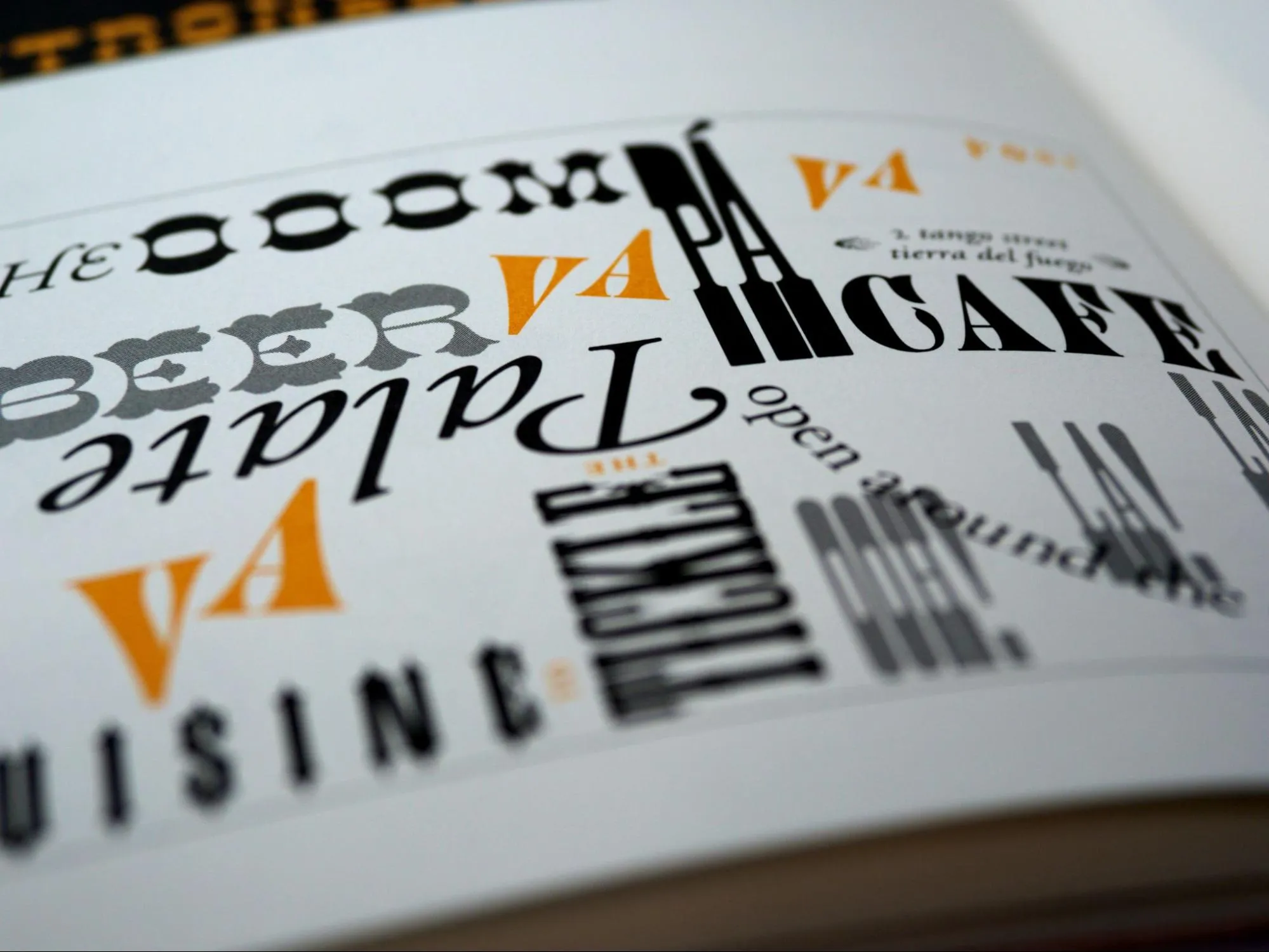What’s the Best Font for a Blog?
From choosing a font that enhances your message to a font that’s versatile for any type of blog, here are nine answers to the question, “What are the best fonts to use on a blog?”
- Choose One That Fits Your Unique Style
- Use a Font That Is Easy to Read
- Consider System Fonts for Optimal Performance
- Avoid a Slow Website With Helvetica
- For a Modern Look, Use Open Sans and Lato
- Georgia Is a Legible and Classic Choice
- It Depends on Your Blog’s Niche
- Roboto Is the Mostly Widely Used Font
- Merriweather Has an Array of Font Weights
Choose One That Fits Your Unique Style
Every blog is unique, and it deserves a font that reflects its personality and values. That’s why the best font is the one that corresponds with your overall blog image. Choosing the right font is crucial to resonating with your target audience because it makes you recognizable and can set you apart from the competition.
So, whether it’s playful and trendy, modern and edgy, or traditional and formal, the best font is the one that fits your content and enhances your messages.
 Natalia Brzezinska
Natalia Brzezinska
Marketing and Outreach Manager, ePassportPhoto
Use a Font That Is Easy to Read
While the task might seem mundane, choosing the right font can make all the difference in your blog’s success. Using fonts that are easier to read makes your content welcoming to readers, as opposed to wacky and hard-to-read fonts. Structure your blog to induce an effortless reading experience by utilizing neutral and simplistic font designs.
One of the best blogging fonts is Lato. The structure of the Lato font is rigid, with semi-rounded letters that will fit most blogging content without a hitch. It conveys a professional and serious tone while making the reader feel homey and comfortable—perfect for in-depth technical writing.
 Brian Campbell
Brian Campbell
Founder, WaterFilterGuru
Consider System Fonts for Optimal Performance
When choosing fonts for a blog, it’s important to consider both performance and privacy concerns. While custom fonts may seem appealing, they can significantly affect page loading times and raise GDPR issues. This is where system fonts come in as the optimal solution. System fonts are pre-installed on most devices and operating systems, making them easily accessible with fewer requests and fewer privacy concerns.
Although system fonts may not have the same level of fanciness as custom fonts, they offer reliability and faster loading times, ensuring a seamless user experience for readers. Popular system fonts include San Francisco, Segoe UI, Roboto, and Ubuntu, all providing a clean and modern look to any blog. Using system fonts, bloggers can keep their page loading times low and provide a visually pleasing experience for their readers.
 Burak Özdemir
Burak Özdemir
Founder, Online Alarm Kur
Avoid a Slow Website With Helvetica
It is little known that using certain fonts can slow your website down, as they need to be loaded from an external source each time someone views your pages. This can be an issue that affects page speed and then your Google rankings.
My tip is to use a web-safe font like Helvetica or Arial. These fonts already exist on users’ systems and so do not need to be loaded externally. This then speeds up your site!
 Anthony Robinson
Anthony Robinson
Founder, Anthony Robinson
For a Modern Look, Use Open Sans and Lato
Choosing the right font for a blog can be a daunting task, but it’s essential to make sure your content is easy to read and visually appealing. As an editor at The Top Facts, I enjoy writing about techy and nerdy topics, and I suggest using clean, modern fonts that are easy on the eyes and enhance readability.
Two great font options that come to mind are Open Sans and Lato. Open Sans is a popular choice for its clean and minimalistic look, making it easy to read on both desktop and mobile devices. Lato has a slightly more decorative design, making it a brilliant choice if you want to add a touch of personality to your blog.
 Cristina Bugatty
Cristina Bugatty
Editor, The Top Facts
Georgia Is a Legible and Classic Choice
Georgia is one of the most suitable and preferred fonts for blogs because of its readability. It is a serif font designed for reading on the screen easily, which is important for online content.
Georgia’s larger x-height, wider letter spacing, and easily distinguishable characters make it an excellent choice for blogs. Research has shown that serif fonts like Georgia are more readable on the screen compared to Sans-serif fonts. Georgia is a safe and classic choice for bloggers who want to ensure their content is visually appealing and easy to read.
 Basana Saha
Basana Saha
Founder, KidsCareIdeas
It Depends on Your Blog’s Niche
The perfect typeface for a blog will vary depending on the blog’s niche, target audience, and general design. Some typefaces are more commonly used and frequently have better reader appeal on blogs. Sans-serif fonts like Arial, Helvetica, and Open Sans are common choices for blogs.
These typefaces are appropriate for blogs with a contemporary, minimalistic aesthetic and are easy to read on screens. Serif fonts, such as Georgia and Times New Roman, are another well-liked option. They may give a blog a sense of sophistication and are appropriate for blogs with a more academic tone.
In the end, a blog’s ideal font is one that is simple to read, matches the blog’s design, and accurately captures its tone and aesthetic. To make the blog accessible to all readers and easy on the eyes, it’s also crucial to take the font size and line spacing into account.
 Paul Somerville
Paul Somerville
Editor-in-chief, Electric Scooter Guide
Roboto Is the Mostly Widely Used Font
Google’s font called Roboto was created in 2011 and is the work of Christian Robertson. The most widely used and downloaded Google Font is, by far, Roboto. That is because it has a geometric, yet approachable, design.
It produces a comfortable, natural reading experience and offers the professionalism that most writing demands. It is a contemporary, humanist Sans-serif typeface that is readable at small sizes and has strong legibility for body text.
The typeface is available in four styles: slab, extended, condensed, and regular. Because of its similarities to other well-known Sans-serif fonts, Roboto is a desirable typeface for web and mobile design.
 Dean Lee
Dean Lee
Head of Marketing, Sealions
Merriweather Has an Array of Font Weights
After over ten years of blogging, Merriweather is hands down my favorite font to use. Merriweather is a perfect mix of both modern and classic design, enabling it to be versatile for any type of blog, depending on its purpose. It also has great, smooth readability, which ensures visitors won’t have any issues while they’re skimming through your posts.
Merriweather also has an impressive array of font weights, giving you the flexibility to make changes when you need to draw attention to certain sections or words in the text. I now rarely experiment with other fonts, as Merriweather always does the job, no matter what kind of content my blog post is trying to convey.
 Alexandru Contes
Alexandru Contes
Co-founder, ReviewGrower
Submit Your Answer
Would you like to submit an alternate answer to the question, “What is the best font to use on a blog?”
